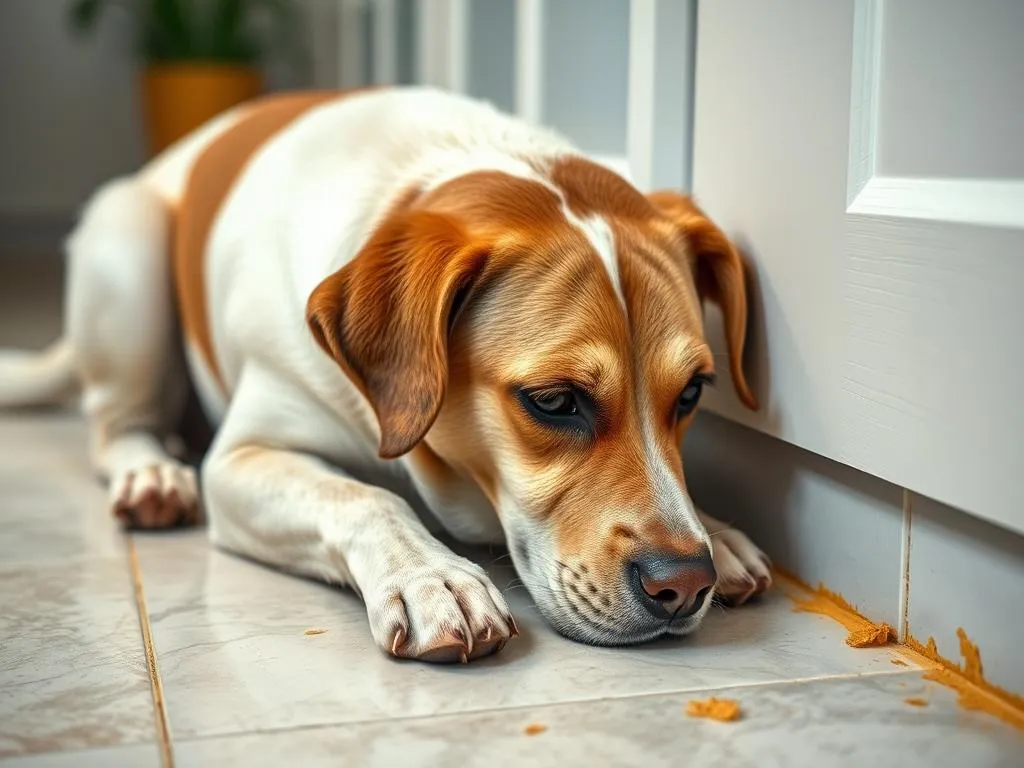
Dealing with dog urine smell on tile surfaces can be a daunting task for any pet owner. While tiles are often preferred for their easy maintenance and durability, they can also become a source of persistent odors if not cleaned properly. Addressing these odors is crucial not only for your home’s ambiance but also for maintaining a healthy living environment for both you and your furry friend. This article will guide you through the process of effectively removing dog urine smells from tile surfaces, providing you with practical methods to keep your home fresh and inviting.
Understanding Dog Urine Odor
Why Dog Urine Smells
To effectively tackle the issue of how to rid dog urine smell on tile, it helps to understand why dog urine has such a strong odor. The smell primarily comes from the composition of dog urine, which contains urea, creatinine, uric acid, and various waste products. When urine dries, it can leave behind uric acid crystals, which are particularly notorious for retaining odors.
Several factors can intensify the smell of dog urine. A dog’s diet plays a significant role; for instance, high-protein diets may produce stronger odors. Health issues, such as urinary tract infections, can also lead to more pungent smells. Additionally, hydration levels can affect the concentration of the urine, making it smell stronger if your dog is dehydrated.
Impact on Your Home
Lingering odors from dog urine can significantly impact your home. Not only do they affect indoor air quality, but they can also become a source of embarrassment when guests visit. Furthermore, if left untreated, dog urine can damage tile surfaces and grout, leading to discoloration and structural issues. Promptly addressing these odors is essential to maintain both cleanliness and the integrity of your home.
Preparing to Clean
Gather Necessary Supplies
Before you begin cleaning, it’s important to gather all necessary supplies. Here’s a list of items you’ll need:
- Commercial cleaning products: Look for enzymatic cleaners designed specifically for pet odors.
- Homemade solutions: Common household items like white vinegar, baking soda, and hydrogen peroxide can be effective.
- Cleaning tools: Have mops, soft brushes, towels, and a spray bottle ready for use.
Safety Precautions
When cleaning with any products, always prioritize safety. Use pet-safe cleaning solutions to ensure your dog isn’t exposed to harmful chemicals. It’s also wise to wear gloves and a mask to protect your hands and respiratory health, especially when using strong cleaners or homemade solutions that may produce fumes.
Cleaning Steps
Immediate Action
If you discover a fresh urine spot, take immediate action to minimize the odor. Start by blotting the area with paper towels or a clean cloth to absorb as much urine as possible. Avoid rubbing, as this can push the urine deeper into the grout or tile surface.
Deep Cleaning Process
Once you’ve taken care of the immediate mess, follow these steps for a thorough cleaning of your tiled surfaces:
- Initial rinsing: Rinse the affected area with warm water to remove any remaining residue.
- Applying cleaning solution: Choose a commercial product or make a DIY solution (mixing equal parts water and vinegar works well).
- Scrubbing techniques: Use a soft brush or mop to scrub the area gently. Different tile types may require varying levels of pressure—be cautious with delicate tiles to avoid scratches.
Rinsing and Drying
After cleaning, it’s essential to thoroughly rinse the area with clean water to remove any cleaning solution residue. Once rinsed, dry the surface completely using towels or a mop. Prompt drying is crucial to prevent new odors from developing, as moisture can encourage bacterial growth.
Deodorizing Methods
Natural Remedies
There are several natural remedies that can effectively help in how to rid dog urine smell on tile:
- Baking soda: This is a powerful odor absorber. Sprinkle baking soda liberally over the affected area and let it sit for several hours or overnight. Vacuum it up afterward.
- Vinegar: White vinegar can neutralize odors. Mix equal parts vinegar and water in a spray bottle, apply it to the area, and let it sit for a few minutes before wiping it off.
- Hydrogen peroxide: This can also be effective. Use a solution of 3% hydrogen peroxide, applying it to the area and allowing it to sit for about 10-15 minutes before rinsing.
Commercial Products
If you prefer a commercial option, there are many pet odor eliminators available. Look for products specifically designed for pet urine, as they often contain enzymes that break down the uric acid crystals. Some popular brands include:
- Nature’s Miracle
- Rocco & Roxie
- Simple Solution
When selecting a product, consider the type of tile you have and the severity of the odor to choose the most appropriate one.
Using Odor Neutralizers
Odor neutralizers work by chemically altering the smell, rather than just masking it. These products can be particularly effective for persistent odors. Brands like Febreze and OdorX can be useful, but ensure they are safe for use around pets.
Preventative Measures
Training Your Dog
Preventing accidents is the best way to tackle the problem at its source. Effective house training can significantly reduce the likelihood of urine spots on tile. Consider using positive reinforcement techniques to encourage outdoor potty habits.
Regular Cleaning Routines
Establishing a regular cleaning schedule can help manage pet odors. Frequent mopping with pet-safe cleaners and spot treatments will keep your tiles fresh. Consider applying a sealant to your tiles; this can help repel stains and make cleaning easier in the long run.
Monitoring Your Dog’s Health
Sometimes, persistent odors can be a sign of underlying health problems. Be vigilant about any changes in your dog’s urination habits. Signs of urinary problems might include increased frequency, straining to urinate, or blood in the urine. If you notice any of these symptoms, consult your veterinarian promptly.
Conclusion
Dealing with dog urine smell on tile doesn’t have to be overwhelming. By understanding the causes of the odor, taking immediate action, and employing effective cleaning and deodorizing methods, you can keep your home smelling fresh. Remember to take preventative measures, including proper training and regular cleaning routines, to minimize the chances of odors returning.
By taking these steps, you can ensure a healthier and more pleasant living environment for both you and your pet. Now, go ahead and tackle those odors for a fresher home!









